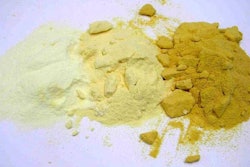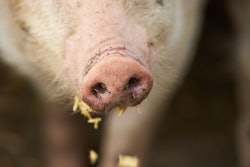
African swine fever (ASF) virus could enter and be transmitted in the U.S. through animal feed and feed ingredients, but that is only one of the many potential vehicles for viral transmission, according to Cassandra Jones, undergraduate research coordinator in the Department of Animal Sciences & Industry at Kansas State University.
Jones spoke Wednesday at the American Feed Industry Association (AFIA) Purchasing and Ingredients Suppliers Conference (PISC) in Orlando, Florida.
If a foreign animal disease like ASF enters the U.S., the feed supply chain has potential for being a primary vehicle for virus movement, she said, but so do workers and other people on farms and at feed mills.
Jones said it’s much more likely that viruses will to be transferred from one farm to another as a result of biosecurity breaches.
“We know that it’s going to be much more likely that a veterinarian walks through from one contaminated site to another and brings virus in on their shoes,” she said.
Risks in feed manufacture, delivery
Jones said feed manufacturing and delivery also have a high potential to spread viruses. This is because 1 gram of feces from an acutely infected pig can contaminate 500 tons of feed – enough to fill 20 feed trucks – with every gram being infective.
“Because of the way that we manufacture and deliver feed, if the feed gets contaminated, the magnitude of infectivity is extreme,” she said. “This is why we’re concerned about feed as a vehicle for transmission.”
She said feed mill workers and feed mill drivers need to understand biosecurity protocol and take steps to prevent disease spread.
“If I have a truck driver that gets out of a corn truck and scrapes his shoes on the pit, which I see a lot of times when I go into different mills, and I get 1 gram of contaminated feces off of his boot, and it falls into my pit, I can contaminate 20-30 different trucks going to different farms,” she said. “And all of that feed is contaminated, and all of it is infectious, and I have multiple animals consuming that feed over a period of time.
“The ugly truth of this is that there are unfortunately lots of places where 1 gram of infectious feces can be introduced into the feed system. I personally think we focus too much on the ingredients being the primary source or the vector” when, she said, “it’s really hard for individuals to understand the importance and the biosecurity of transitioning from farm into a feed mill setting where 1 gram of fecal material can be infectious.”
View our continuing coverage of the African swine fever outbreak.
















